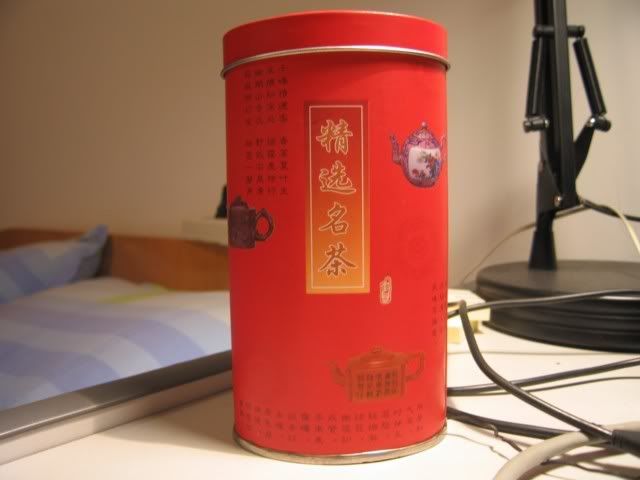As I promised yesterday, I made my way back to Maliandao today.
I decided not to go to the same tea city as I did last two times, but rather, somewhere else. So I kept walking down the street, past the Carrefour. There were apparently a lot more stores down the street, and I passed this:

The Beijing Tea Leaves Company’s sales division, which looks like another tea mall. Across the street is this:

The Jingmin Chacheng. Jing refers to Beijing. Min is the short name for Fujian province. Chacheng is teacity. Since I decided that today I want, first and foremost, some Wuyi tea to feed my new pot, I went in there, hoping to find some Wuyi tea (which is, of course, from Fujian).
Inside, there are about 20 stores every floor. Most, however, are mixed stores, and everybody sells puerh. Some are puerh only. I went into one that is a Dayi (Menghai) specialty store, and saw a cake that had silvertips covering the cake, but inside is all grades 6-8 tea, I think. Not very appealing looking once you break it apart. I sort of prefer if the whole thing inside and out are just that. Selling a cake that is covered with tips while the inside is not seems a little dishonest — I know that Menghai cakes are usually by formula, so they are never “one tea” for the whole thing, but for those who do not know, it’s a trap.
Anyway, I walked around…. not seeing many stores that specialize in Wuyi. Most of the stores sell primarily tieguanyin, which in Beijing is usually strictly of the qingxiang variety. There are some green tea vendors too… but where’s my Wuyi?
Then I came across this store on the second floor called “Lao He Yan Cha”. Lao He is the guy’s nickname — old He (He is his last name). Yan Cha is rock tea, what you usually refer to when you want to say tea from Wuyishan. The wall was lined with boxes, the ubiquitous Dahongpao boxes you see everywhere (including Toki’s blog). In I went.
The owner is indeed older than your normal Maliandao set (people in their 30s or 40s) and is a guy who is probably around 50s/60s. The flavour of the day for me is that I’m Japanese (although at the Menghai store they did correctly identify me as a “nanfangren” or Southerner, but then she guessed maybe I could be from Malaysia…). I asked for Wuyi tea, and he said while he does have some stuff like Tieluohan or Suijingui, his Rougui is better, so Rougui it was…

The first two teas I tried. The one on the left is a lighter fired one, while the one on the right is darker. Both are quite decent, with good amounts of Wuyi rock tea taste. Rougui is a bit more delicate, I think, and it shows. I liked them both.
But then he pulled out another one, better quality, and instantly, you can taste the difference. I think on its own, I might not have noticed, but having just had two, and drinking another one, I could taste that the third one is better. Also higher fired, and nice tasting. He told me this is a 2005 tea. He also said he has some 2006 ones, so I tried that too… big difference. The 2006 tastes fresher, more lively. The 2005 is duller, but more subdued, not worse, just different.

I ended up getting both, 150g each, for a total cost of about 200 RMB (25 USD). Dirt cheap, really. The guy roasts his own tea, so I might go back again to try some other stuff he has. I know I haven’t tried them all.
I also bought an empty can

For a grand price of 30 cents USD.
There are a bunch of teaware stores too that I quickly browsed. The quality was higher than other places. I might go back there again to pick out a nicer gaiwan and accessories. A nice gaiwan was only $5 USD!
Having tasted four teas in quick succession, I was rather caffeine high. I went to the Maliandao Tea City to find the guy I met last time, but he wasn’t there. I thought I would show him the Xizihao Lao Banzhang and see what he thinks, but since he wasn’t there, and since I was already feeling pretty buzzed, I just left.
Now, if you’ll excuse me, I need to lie down. Caffeine is hitting me…


























 (1st brew)
(1st brew) (3rd brew)
(3rd brew) Wet leaves
Wet leaves RSS - Posts
RSS - Posts
I took you at your suggestion and have been reading some of your old post-Covid posts. I haven’t been to…